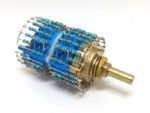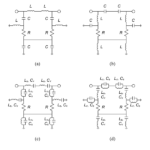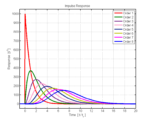A logarithmic resistor ladder consists of a resistor string and switches designed to attenuate a signal. The state of the switches can be considered to represent a digital code proportional to the logarithm of the attenuation ratio. Logarithmic attenuation is useful when a large dynamic range is needed. Audio volume control and fading/balancing audio signals […]
Analog ICs
What causes noise in analog designs and how can it be controlled?
Controlling noise in analog and mixed-signal circuits is important but not simple. Data integrity is dependent on controlling noise in the signal chain. If left uncontrolled, noise can impair or disrupt system operation. This FAQ starts by looking at the various sources and types of noise, looks at how noise can enter the signal chain […]
Five considerations for mixed-signal PCB layouts
Printed circuit board (PCB) layout is an important activity when developing mixed-signal applications. A lot can go wrong, and everything needs to be correct for a successful design. Impedance control is an obvious consideration, but it needs to include trace resistance as well as parasitic inductances and capacitances. Maintaining signal integrity can be challenging. This […]
When is a high CMRR needed in an op amp?
Common mode rejection ratio (CMRR), also called common mode rejection (CMR), quantifies the ability of an operational amplifier (op amp) to reject common-mode signals. Common-mode signals are signals that appear simultaneously and in phase on both inputs. This FAQ begins by defining what CMRR is and how it’s quantified, reviews some design considerations related to […]
What are reflectionless filters, Part 3: basic principles
Standard filters reflect unwanted stopband energy, but reflectionless filters present a seamless impedance across both stopband and passband, which greatly improves performance of the RF signal chain. Beginning in 2011, Dr. Matthew A. Morgan of the National Radio Astronomy Observatory (NRAO) in Charlottesville, West Virginia, working with Tod A. Boyd and later with Wavley M. […]
Hardware-assisted verification technology in the mainstream
By Jean-Marie Brunet, and Dr. Lauro Rizzatti, Siemens EDA Today, system-on-chip (SoC) devices permeate our world and propel numerous industries. They are integral for the internet of things (IoT), to power up complex 5G/6G wireless applications, sit at the core of artificial intelligence/machine learning (AI/ML) algorithmic processors, drive powerful data center computers and storage devices, […]
Tolerance analysis distinguishes prototypes from production units
It’s not enough to model and simulate circuit behavior – you also have to investigate the effects of component variations from their nominal values due to unavoidable tolerances. There’s a semi-serious quip that scientists can build one of anything – but just one; it takes engineers and production experts to build it again and again […]
The practical magical first-order analog filter: Part 1
Finding the right analog filter to build a sensor circuit doesn’t have to be complicated. Understandably, the plethora of filter options can be overwhelming. Also, selecting a less-than-ideal filter may result in compromises, potentially increasing system cost, or affecting performance. To help simplify filter selection, this series of blogs explore key considerations when assessing your […]
An overview of filters and their parameters, Part 4: Time and phase issues
Understanding how filters are characterized is the first step in choosing an appropriate topology with suitable specifications. Thus far, we have focused on filters primarily in terms of their frequency response. However, it is equally legitimate to look at their time-domain and phase-related performance, and in many cases, just as or even more important. Q: […]
An overview of filters and their parameters, Part 1: Context
Understanding how filters are characterized is the first step in choosing an appropriate topology with suitable specifications. Mention “filters” to electrical engineers of the older persuasion, and you’ll likely see a look of nostalgia mixed with fear. Why so? Because “back in the day” a course on filter theory was mandatory for nearly all EE […]










